Are you looking for a way to install and run Ubuntu 18.04 Linux server on your Android Smartphone or tablet without rooting the phone? Then try UserLAnd.
Android, being a very popular operating system users are keep looking for a way to easily install different Linux distros on it. Hitherto, it was very tedious work to run Linux OS on Android but not anymore. With the help of UserLand, we can install Kali, Ubuntu, Arch Linux, Debian distros on Android in a minimal form. It provides built-in Shell and VNC sessions for a graphical experience. UserLand was developed by the team of GNURoot Debian App which was very popular before, as a replacement.
Here we will show the way to install and run Ubuntu 18.04 minimal server on an Android phone without any kind of rooting process. It helps you to learn Linux directly on your phone without voiding the warranty.
Note: The below-given steps also work for Debian and Kali Linux available in UserLAnd App.
Install Ubuntu Linux on android without root
Step 1: Download UserLAnd App
This app is available on the Google Play Store, here is the link to download it. There are no complications in its installation just like any other, open the Play store on phone either use the here given link or search for UserLAnd and when appears, tap to install it.
Step 2: Run UserLAnd to install Linux OS on Android
The moment, the app opens, you will see multiple Linux distros options along with their logos such as KALI Linux, Ubuntu, Alpine, Arch Linux, Debian along with lightweight Debian based Desktops with Xfce and Lxde desktop environment. It also has some Linux development, games, and productivity apps. Well! here we are only about to focus on the process to run Ubuntu on Android. Tap on the Ubuntu icon.
Step 3: Setup Username and Password for user and VNC
When you tap on the Ubuntu or any other Linux distros have given in UserLAnd, the first it will ask you to set up a username, password, and VNC password.
Type whatever you want and remember this will set you as a standard user of your Android’s Ubuntu operating system. Once done, tap on the Continue option.
Step 4: Download Ubuntu for Android
The next thing which we need to select that how we would like to connect installed Linux OS Ubuntu on Android with SSH or VNC. I would like to use SSh which is simple and from the inbuilt terminal of UserLAnd, I can easily control my Linux operating system. We will also show later in this article how to use RealVNC to connect the existing Ubuntu, KALI, or any other OS available on this Android application.
After that, it will say the files of Ubuntu to download on Android are 80MB and would like to download it without Wifi, tap continue if you want to download them on mobile data. It will take a few minutes to set up all depend upon your internet connection speed.
Step 5: Log in to Android running Ubuntu
After the installation, as we have selected the SSH in the beginning, a terminal window will open. Now here just like a regular Ubuntu server enter the password you have created above for your Ubuntu image running on Android.
Step 6: Update and Upgrade Ubuntu running on Android
Apart from the small screen and no init boot it is just like Windows 10 WSL, you will not feel any other differences on this Ubuntu Linux image, emulated on an Android phone.
Thus, now we can use the keyboard to enter the command to our Linux. Let’s first update and upgrade all the packages of it. Run the following command
sudo apt-get update
sudo apt-get upgrade
Step 7: Set the root password for Ubuntu
As we know by default there is no password for the root user, so to set that use the following command:
sudo passwd root
Enter Unix Password two times that you want to set and it will be done…
Step 8: Install Linux Desktop Environment LXDE
By default, the OS will have only a command-line interface and to give it some Graphical user interface, we need to install it manually. Here we are installing lightweight LXDE for Ubuntu Linux to run GUI on Android phones.
sudo apt-get install lxde -y
Step 9: Setup VNC to access Ubuntu via GUI interface
Note: Running Linux GUI for Ubuntu on Android is not recommended unless you have a high-end smartphone because it is laggy and also crashes sometimes.
Well! still for the sake of the tutorial I am telling you how to access and view installed LXDE Desktop on Ubuntu on Android.
On UserLAnd Ubuntu command-line shell execute the following commands:
We can use the XSDL Android app to access the GUI desktop for Ubuntu but that is laggy and that’s why decided not to use it, instead RealVNC viewer.
sudo apt install tigervnc-standalone-server -y
Set login password:
vncpasswd
Start VNC Server
vncserver -geometry 800x600 -depth 24
If you are using a Tablet or big-screen phone then can increase the resolution to 1920×1080
Note: I am installing it on OnePlus5 and it has Full HD resolution and in the above command use your resolution.
Step 10: Install the RealVNC Android App
In the above step, we already have set up the Linux VNC server on Ubuntu and now it’s time to download the Android app here called RealVNC Viewer- Remote Desktop.
Step 11: Connect VNC to Ubuntu LXDE Desktop
On the VNC viewer tap on the + icon to create a new connection. Enter 127.0.0.1:5901 and the Name of your installed OS, in my case it was raj. Then tap on the Create option.
As our connection is not encrypted it will warn that; here ignore this and simply tap on OK.
Now in Authentication enter the password that you have created while installing the TightVNC server above.
Finally, you will see the LXDE Linux Desktop environment on Android for Ubuntu which further installed the UserLAnd app on Android.
If you want to kill or stop the vncservice then use the below command:
vncserver -kill :*
In this way, we can use this app to have Ubuntu for fun and experiment with Linux on an Android phone or tablet.
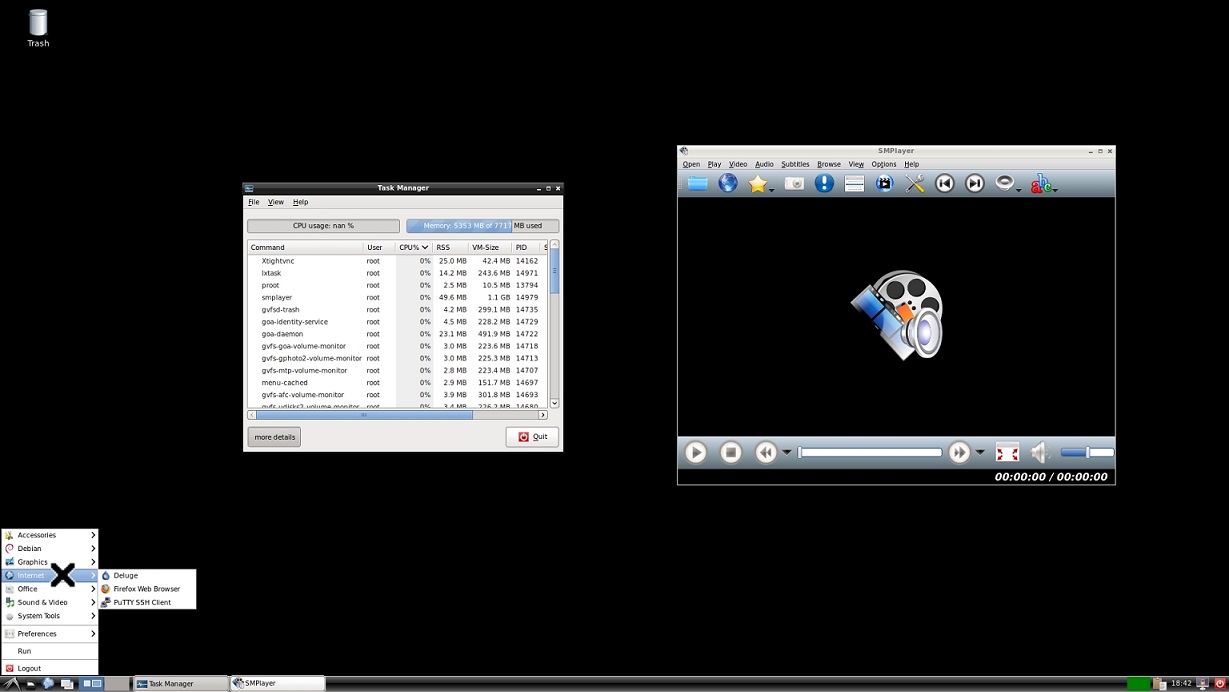
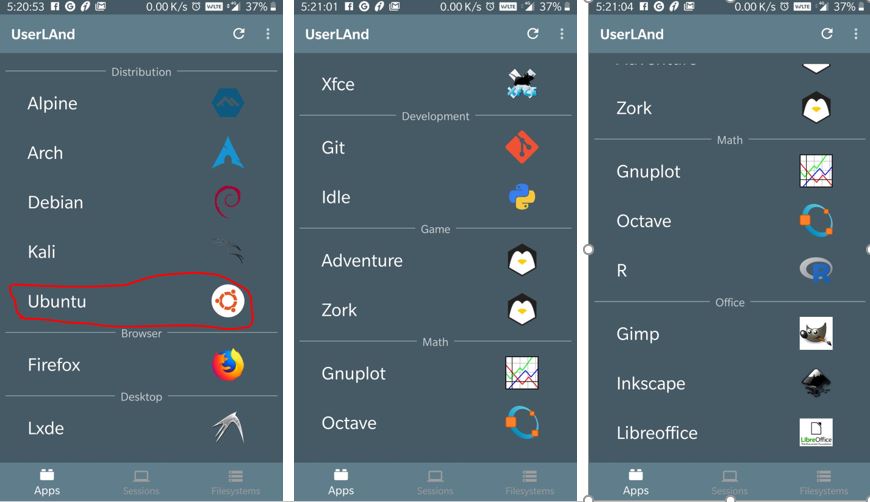
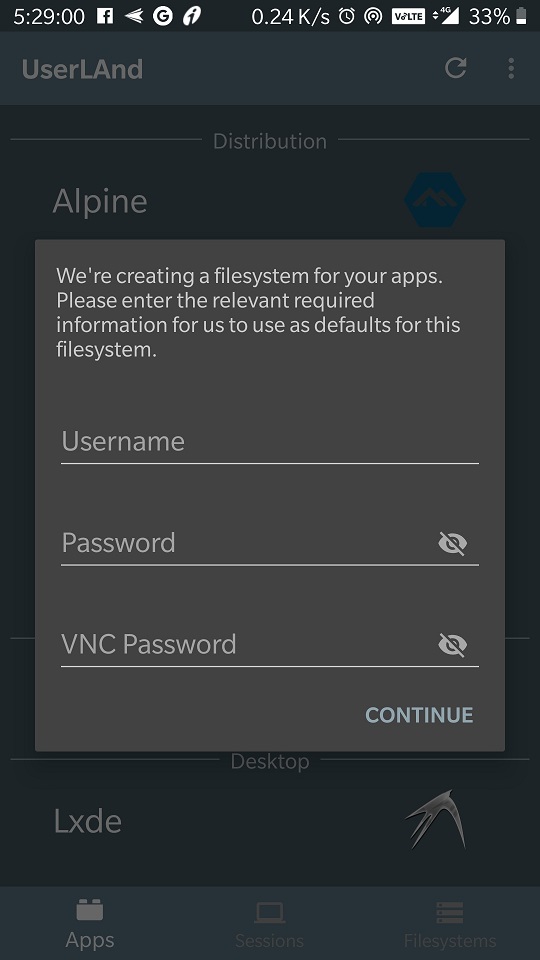
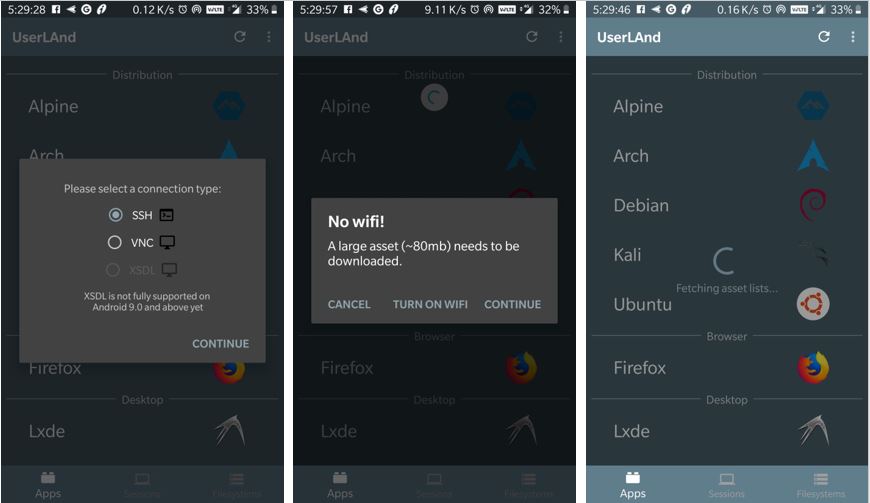
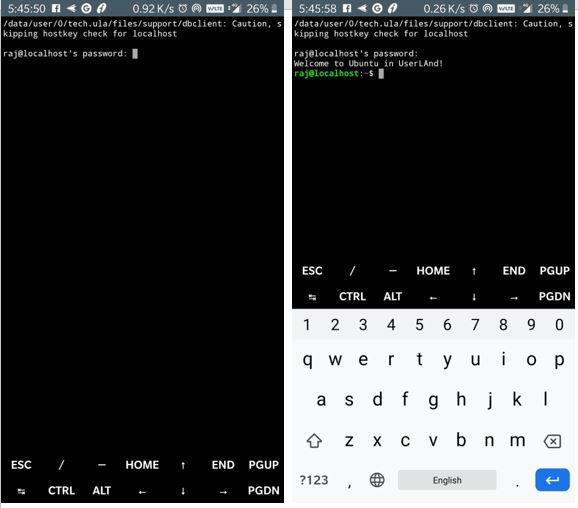
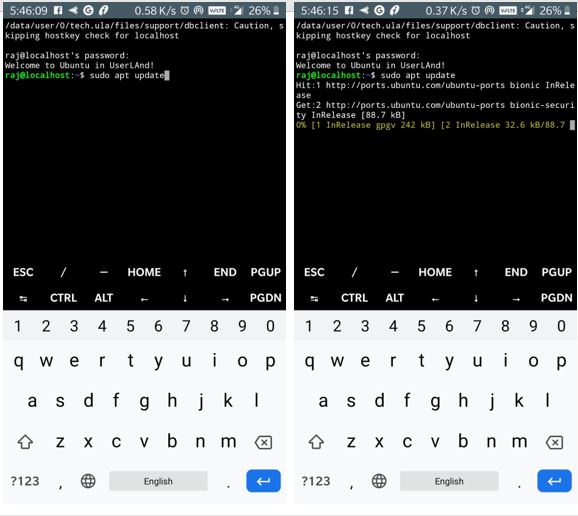
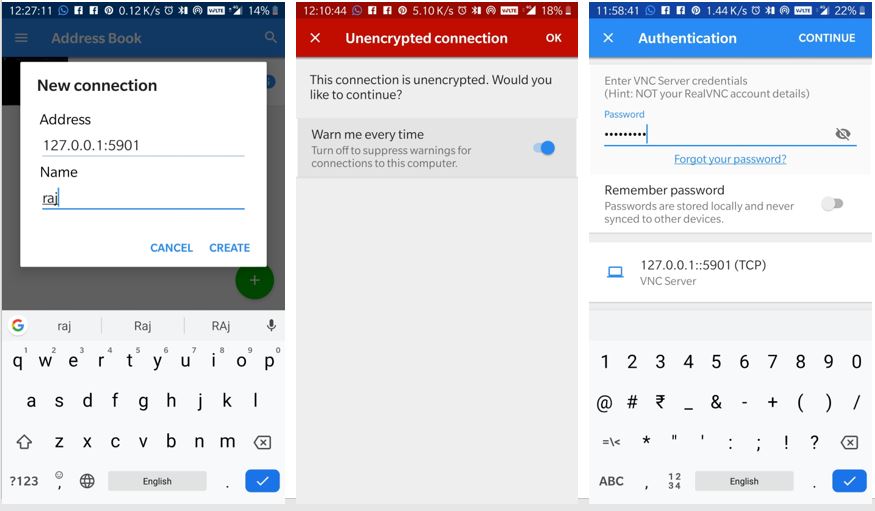
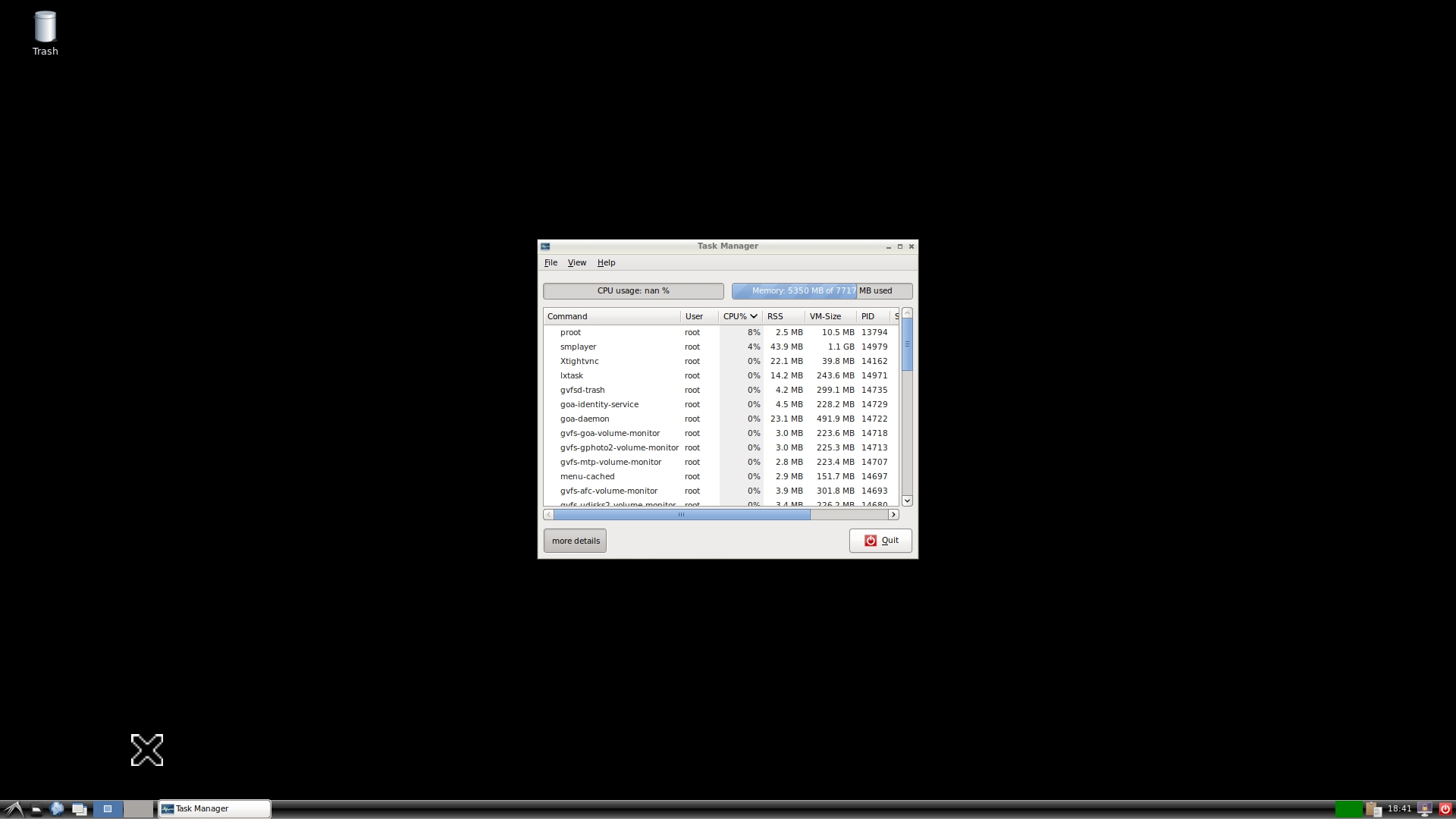






Hi
I am using MI A2 mobile,
when am trying to use this cmd
sudo vncserver :1 -geometry 1080*2160
Getting error : vncserver: geometry 1080*2160 is Invalid
Resolution 1080 x 2160 pixels
Please do the needful
Try this command:
sudo vncserver :1 -geometry 1920×1080
Maybe the 1080*2160 resolution would not be supported.
Thanks very much for the article. When this is fully installed can I use a bluetooth mouse with LXDE desktop?
Hello Jim, we can
we comment on that because we didn’t try Bluetooth keyboard or mouse, however, go ahead and do it, perhaps it works and in case it did, let us know too.
I have going through all the steps to install but when i try to connect the vnc app it give the error message of “this computer’s domain name could be resolved” help!
how do you figure out the name of my installed os?
Vnc server is not connecting. Said domain name could not be resolved
It’s missing a . Between the 0 and 1 only reason I found out is by the picture he posted
Had to give up after 2 days. Userland sorts out terminal and Ubuntu but cannot get a desktop to work, terminal only. Any advice would be much appreciated.
I’m using a Huawei P30 pro with latest updates.
Regards.
I wont to get rid of android all together and run either ubuntu or ubuntustudio on my rockchip_3288 android box that has 64gb and 4gb of ram… can this be done, even better if I can run windows 7 or up
hai.. i cant connect to vnc apps.. how can i fix this..? the computers domain name could not be resolved.. thank you
How do I find my domain name?
Mengapa ketika saya menjalankan startlxde
$ ** Message: 17:13:56.846: main.vala:102: Session is LXDE
** Message: 17:13:56.849: main.vala:103: DE is LXDE
(lxsession:15557): Gtk-WARNING **: 17:13:56.870: cannot open display
I have also suffered from this problem. How can I fix it?
My question is… how can I install other applications like pycharm in my Ubuntu after setting up UserLAnd on my Android phone
How do I run gnome, unity, kde or mate
(lxsession:15022): Gtk-WARNING **: 17:18:17.818: cannot open display: what to do
when I type the command ‘ apt-get install vcnserver ‘ . It says vnc candidate has no installation package . I followed just as it was mentioned in the article but I am stuck . Please help
Command to install VNCserver is – sudo apt install tightvncserver
I install the vnc server – twice. It does not request a password. I do not get the windows shown. I get no errors.
Worse RealVNC Viewer has NO support and I get the *computer domain name not resolved” error. Many are complaining about it. Come on Raj. Please help us Newbees out.
I have updated the article, now please try it again.
still havingissues of doamin name. i used ubuntu as well as ubuntu lxde as thats whatis installed.
Worked !! Amazing work !! Thanks
Hi I’ve actually installed Ubuntu on my Tecno pop 2 but I’ve been trying to type in my password but I can’t pls is tgere any solution to this problem
Type in your password and press enter…. it will ask you to type it in again. Just doesn’t show characters when you’re typing in the password.
How i can solve the problem
…..
userland@localhost:~$ sudo apt install tigervnc-standalone-server tigervnc-xorg-extension tigervnc-viewer
Reading package lists… Done Building dependency tree
Reading state information… Done
tigervnc-standalone-server is already the newest version (1.10.1+dfsg-3).
The following additional packages will be installed: libfltk-images1.3 libfltk1.3
The following NEW packages will be installed: libfltk-images1.3 libfltk1.3 tigervnc-viewer tigervnc-xorg-extension
0 upgraded, 4 newly installed, 0 to remove and 52 not upgraded.
9 not fully installed or removed. Need to get 867 kB of archives.
After this operation, 2105 kB of additional disk space will be used.
Do you want to continue? [Y/n] y Get:1 http://ports.ubuntu.com/ubuntu-ports focal/universe armhf libfltk1.3 armhf 1.3.4-10build1 [484 kB]
Get:2 http://ports.ubuntu.com/ubuntu-ports focal/universe armhf libfltk-images1.3 armhf 1.3.4-10build1 [23.5 kB]
Get:3 http://ports.ubuntu.com/ubuntu-ports focal/universe armhf tigervnc-viewer armhf 1.10.1+dfsg-3 [175 kB]
Get:4 http://ports.ubuntu.com/ubuntu-ports focal/universe armhf tigervnc-xorg-extension armhf 1.10.1+dfsg-3 [184 kB]
Fetched 867 kB in 1s (796 kB/s)
debconf: delaying package configuration, since apt-utils is not installed
Selecting previously unselected package libfltk1.3:armhf. (Reading database … 72981 files and directories currently installed.)
Preparing to unpack …/libfltk1.3_1.3.4-10build1_armhf.deb …
Unpacking libfltk1.3:armhf (1.3.4-10build1) … Selecting previously unselected package libfltk-images1.3:armhf.
Preparing to unpack …/libfltk-images1.3_1.3.4-10build1_armhf.deb …
Unpacking libfltk-images1.3:armhf (1.3.4-10build1) … Selecting previously unselected package tigervnc-viewer.
Preparing to unpack …/tigervnc-viewer_1.10.1+dfsg-3_armhf.deb … Unpacking tigervnc-viewer (1.10.1+dfsg-3) …
Selecting previously unselected package tigervnc-xorg-extension.
Preparing to unpack …/tigervnc-xorg-extension_1.10.1+dfsg-3_armhf.deb …
Unpacking tigervnc-xorg-extension (1.10.1+dfsg-3) …
Setting up udisks2 (2.8.4-1ubuntu2) … Failed to scan devices: Permission denied
dpkg: error processing package udisks2 (–configure): installed udisks2 package post-installation script subprocess returned error exit status 1
Setting up libfltk1.3:armhf (1.3.4-10build1) …
Setting up libfltk-images1.3:armhf (1.3.4-10build1) … dpkg: dependency problems prevent configuration of gvfs-daemons:
gvfs-daemons depends on udisks2; however: Package udisks2 is not configured yet.
dpkg: error processing package gvfs-daemons (–configure):
dependency problems – leaving unconfigured dpkg: dependency problems prevent configuration of gvfs-backends:
gvfs-backends depends on gvfs-daemons (= 1.44.1-1ubuntu1.1); however: Package gvfs-daemons is not configured yet.
dpkg: error processing package gvfs-backends (–configure):
dependency problems – leaving unconfigured
No apport report written because the error message indicates its a followup error from a previous failure.
No apport report written because the error message indicates its a followup error from a previous failure. Setting up tigervnc-viewer (1.10.1+dfsg-3) … update-alternatives: using /usr/bin/xtigervncviewer to provide /usr/bin/vncviewer (vncviewer) in auto mode
update-alternatives: warning: skip creation of /usr/share/man/man1/vncviewer.1.gz because associated file /usr/share/man/man1/xtigervncviewer.1.gz (of link group vncviewer) doesn’t exist
update-alternatives: warning: skip creation of /usr/share/man/man1/xvncviewer.1.gz because associated file /usr/share/man/man1/xtigervncviewer.1.gz (of link group vncviewer) doesn’t exist
No apport report written because MaxReports is reached already dpkg: dependency problems prevent configuration of gnome-disk-utility:
gnome-disk-utility depends on udisks2 (>= 2.7.6); however:
Package udisks2 is not configured yet.
dpkg: error processing package gnome-disk-utility (–configure): dependency problems – leaving unconfigured
Setting up libfprint-2-2:armhf (1:1.90.2+tod1-0ubuntu1~20.04.8) … Failed to scan devices: Permission denied
No apport report written because MaxReports is reached already dpkg: error processing package libfprint-2-2:armhf (–configure): installed libfprint-2-2:armhf package post-installation script subprocess returned error exit status 1
Setting up tigervnc-xorg-extension (1.10.1+dfsg-3) … dpkg: dependency problems prevent configuration of gvfs:armhf:
gvfs:armhf depends on gvfs-daemons (<= 1.44.1-1ubuntu1.1); however: Package gvfs-daemons is not configured yet.
dpkg: error processing package gvfs:armhf (–configure):
dependency problems – leaving unconfigured
No apport report written because MaxReports is reached already No apport report written because MaxReports is reached already
dpkg: dependency problems prevent configuration of fprintd:
fprintd depends on libfprint-2-2 (>= 1:1.90.1); however:
Package libfprint-2-2:armhf is not configured yet.
dpkg: error processing package fprintd (–configure): dependency problems – leaving unconfigured
dpkg: dependency problems prevent configuration of gvfs-fuse:
gvfs-fuse depends on gvfs (= 1.44.1-1ubuntu1.1); however:
Package gvfs:armhf is not configured yet.
dpkg: error processing package gvfs-fuse (–configure): dependency problems – leaving unconfigured
dpkg: dependency problems prevent configuration of libpam-fprintd:armhf:
libpam-fprintd:armhf depends on fprintd (= 1.90.9-1~ubuntu20.04.1); however:
Package fprintd is not configured yet.
dpkg: error processing package libpam-fprintd:armhf (–configure): dependency problems – leaving unconfigured
No apport report written because MaxReports is reached already
No apport report written because MaxReports is reached already
Processing triggers for mime-support (3.64ubuntu1) … Processing triggers for hicolor-icon-theme (0.17-2) …
Processing triggers for gnome-menus (3.36.0-1ubuntu1) …
Processing triggers for libc-bin (2.31-0ubuntu9.2) … Processing triggers for man-db (2.9.1-1) …
Processing triggers for desktop-file-utils (0.24-1ubuntu3) … Errors were encountered while processing:
udisks2 gvfs-daemons
gvfs-backends
gnome-disk-utility libfprint-2-2:armhf
gvfs:armhf
fprintd
gvfs-fuse
libpam-fprintd:armhf E: Sub-process /usr/bin/dpkg returned an error code (1)
still having issues of the domain name. I used ubuntu as well as ubuntu lxde as that’s what is installed.
How can I set or settled password because i can not previous password
Thank you for everything